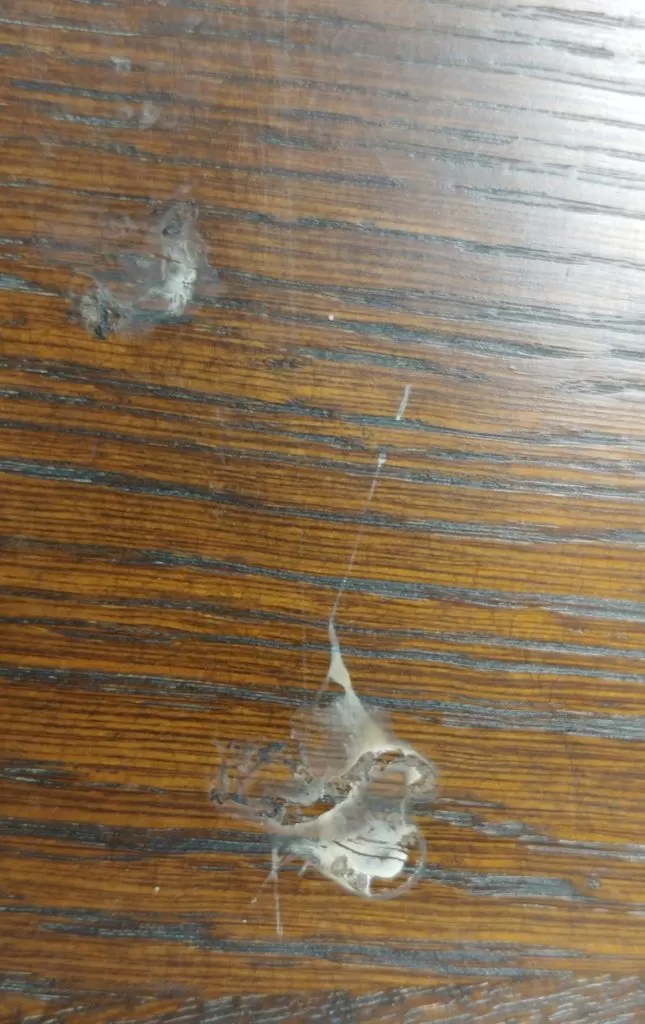“First, Do No Harm”
by Kate Nixon
As some of you readers may know, I recently moved all my conference materials – and myself – into a new office space in Asheville where I will spend the foreseeable future planning the 36th National Arts and Crafts Conference at the Grove Park Inn. Indeed, a moving truck and my car were filled with boxes of office supplies, endless amounts of file folders, plastic bins of thoughtfully stored and inventoried conference items — along with a large library table.
This wooden table will act as my saving grace when I’m walking around the office on the phone or when I need to spread out my notes or my mailing workspace as I create the annual conference attendee packets to be mailed out this December. It is my job to keep the table in the best condition I can as it will be a focal point of my new Arts & Crafts office. So naturally, when I noticed scuffing and an odd stain on the table, I rushed to Lowe’s to grab some supplies since I was determined to bring my library table back to its former glory.
Among the reminders and advice I’ve received from Bruce over the years, one major tip was First, Do No Harm. I knew to stay away from any ammonia-based products from my experience filming Bruce’s “Furniture Care 101” videos; any risk of the finish eroding away should not be taken. I knew the table was in great working condition and despite the scuffs and little impurities, I had a fantastic table on my hands. So when looked down and noticed a bright spot of whitish hardened gunk on my table, I tried to push the thought of it out of my mind. I couldn’t leave it alone.

While wood cleaners/polish have slightly changed their formulas over the years, it’s been suggested over and over again that the combination of damp washcloth is best to wipe away impurities and finishing up with either a think layer of oil or paste wax. So what did I do?

It’s amazing all the imperfections you can locate on something you now find to be in your immediate care. A drop of whitish gunk on my library table.
Damp microfiber cloth in hand, I stared at the white gunk — and I stared at the tempting white can of Purell wipes on my counter. No, I said to myself. First, do no harm. As I gave the surface of the library table a good wipe down, I managed to remove the unknown substance with a minimum amount of friction and succeeded for the most part. Residue could still be seen. If the thought of residue on the table wasn’t enough, I thought back to the image of my movers moving the heavy table, their brows dripping with sweat droplets from moving in the summer heat. Sweat on my new table in a post Covid-era when it seems like a new strain was coming up every season and I swore I saw a dried watermark.
Before I knew what I was doing, a damp Purell sheet was wrapped around my index finger and I was pointing at the residued area, determined to apply the sanitizing ingredient in the smallest area possible. A fingerpad sized area.
Somewhere in the back of my head, my inner voice screamed “Warm rag with a little bit of soap on it!!”
Long story short, I had given into temptation, even though my brain knew that warm water and soap would most likely do the trick. The table looks fine, but I still look back in regret for doing a fingerpad-sized diameter of harm to my library table. It’s the most sanitized area of my table, but still, warm water and soap next time.
“That’s the only thing you can do with a mess. Start cleaning it up, a little at a time.” – Lisa Wingate
Kate

